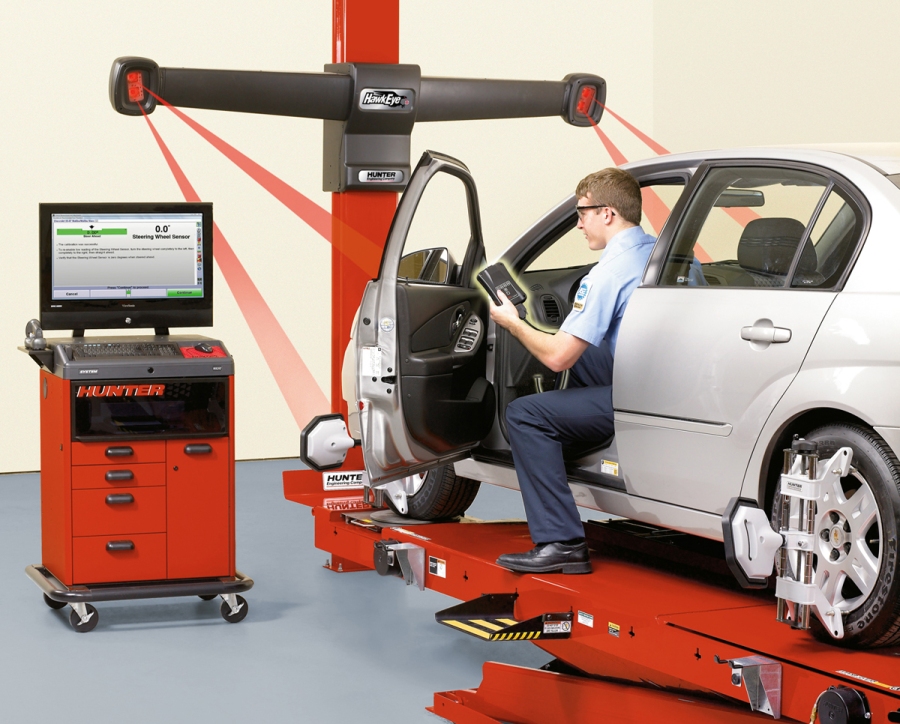Book now Call 058 44340
Free wheel alignment check
Four Wheel alignment, sometimes referred to as tracking, is part of standard automobile maintenance that consists of adjusting the angles of the wheels, this is to ensure that your driving and braking is safe and straight and your tyres wear evenly.

Properly adjusted wheel alignment can
Make your vehicle handle better
Reduce tyre wear
Improve fuel economy
This means
You drive more safely
You benefit the environment
You save money
Here’s the solution
Computerised 4-wheel alignment provides accurate results, so much so that it is the only alignment technology approved by car manufacturers. Our Technicians are fully trained in the use of this equipment. The system used in this wheel service centre references all manufacturers specifications and custom database.
Car Wheel Alignment
Wheel alignment (sometimes called tracking) is an important piece of car maintenance that ensures your car’s wheels are giving their best performance in terms of handling, fuel economy, ride comfort and even tyre life.
Thanks to advances in the technology used to measure wheel alignment, a computerised alignment can have your wheels back to the precise positioning that they were when they left the factory, and our standard wheel alignment use lasers to ensure a good alignment for your car.
Why does my car need a wheel alignment?
A car’s wheels go out of alignment from everyday use, but knocks and bumps caused by potholes or ‘curbing’ your car can have an immediate effect on your car’s tracking.
Even though you might not immediately notice the effect to your car, even having wheels that are misaligned by a small amount can have an impact on your car’s fuel economy and tyre wear, however the further out of alignment your tracking is, the more noticeable the impact will be.
While the two are often confused, wheel alignment is not the same as wheel balancing. Find out more about wheel balancing.
What is wheel alignment?
Wheel alignment dictates the angles at which your car makes contact with the road. For the best performance you ideally want to have as much of the surface area of the tyre to be in contact with the ground as possible.
There are three main types of wheel alignment that should all be adjusted to get the optimal performance from your car:
Toe Alignment
Toe Alignment featuring Toe in and Toe Out
Toe is measures how much a pair of wheels are turned in or out from a straight ahead position.
Toe alignment can be carried out on the front wheels alone or the front and rear wheels.
You will feel your car ‘pulling’ to one side if the toe alignment is out.
Camber Alignment

Camber alignment including Positive and Negative Camber
Camber is the vertical tilt of the wheel
If the camber is out of alignment it will cause the tyre tread to wear excessively on the edge
If the camber is different from wheel to wheel it can cause your vehicle to pull to one side
Camber misalignment may not be adjustable on all cars. If the camber alignment is out on these vehicles it may indicate that something is worn or bent and should be inspected more closely.
Caster Alignment

Positive and negative caster alignment
Caster alignment is the angle of the steering pivot when viewed from the side of the vehicle
Caster has little effect on tyre wear, but it affects steering stability
If the caster is out of adjustment, it can cause problems in straight line tracking
If the caster is equal but too negative, the steering will be light and the vehicle will wander
If the caster is equal but too positive, the steering will be heavy and the steering wheel may kick when you hit a bump
How can you tell if your wheels are out of alignment?
Chances are that you won’t be able to see whether your wheels are misaligned just from looking at the steering and suspension components, but there are a few signs you can look out for if you suspect your tracking is off:
Pulling to one side
A common complaint of wheel misalignment is that the car might ‘pull to one side’ while driving, even when the steering wheel is level. This is often most noticeable while driving on a motorway or other long, straight roads.
Uneven tyre wear
Ideally, when a tyre is inflated to manufacturer’s specifications it should wear evenly over time, however misaligned wheel tracking can speed up wear over specific areas- most commonly on one of the tyre’s edges.




